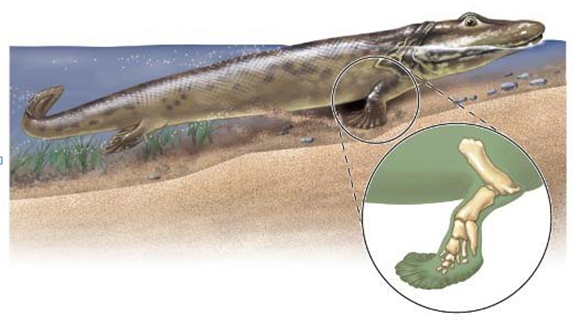Which one of the following describes an event that takes place during gene regulation at the level of the chromosome?
A. Chromatin becomes condensed in order
for transcription to begin.
B. Chromatin coils so it can become more
accessible to the proteins that carry out
transcription.
C. RNA polymerase and associated proteins
bind to nucleosomes.
D. Chromatin is remodeled and nucleosomes
are repositioned so that specific regions of
the DNA can be made available for
transcription.
E. Cytosine bases in the sequence near the
promoter of a gene become methylated in
order to stimulate transcription.
D
You might also like to view...
Why does Neisseria gonorrhea adhere only to mucosal epithelial cells in the genitourinary tract, eye, rectum, and throat?
What will be an ideal response?
The forelimbs of Tiktaalik have bones, but are fringed with fins instead of toes (see figure). Which of the following is the best explanation for this observation?

A. This species was an evolutionary dead end, which is why no modern species have both bones and fins on their forelimbs.
B. This is a common ancestor to all of the modern fish species that have bones in their forelimbs.
C. This is a transitional fossil, and the species has not yet lost its fins.
D. This is a common ancestor to all of the modern amphibian species that have fins on their forelimb.
E. This is a transitional fossil, and the species has not yet lost its arm bones.
The different seasons of the year are caused by the
A. gravitational pull of the moon as it travels around the Earth. B. tilt of the Earth's axis as the Earth travels around the Sun. C. rotation of the moon around the Earth. D. rotation of the Earth on its axis. E. rotation of the Earth around the Sun.
When genes are linked, a few of the recombinant genotypes still occur in the offspring because of
A) mutation. B) linkage. C) independent assortment. D) natural selection. E) crossing over.